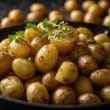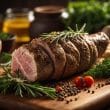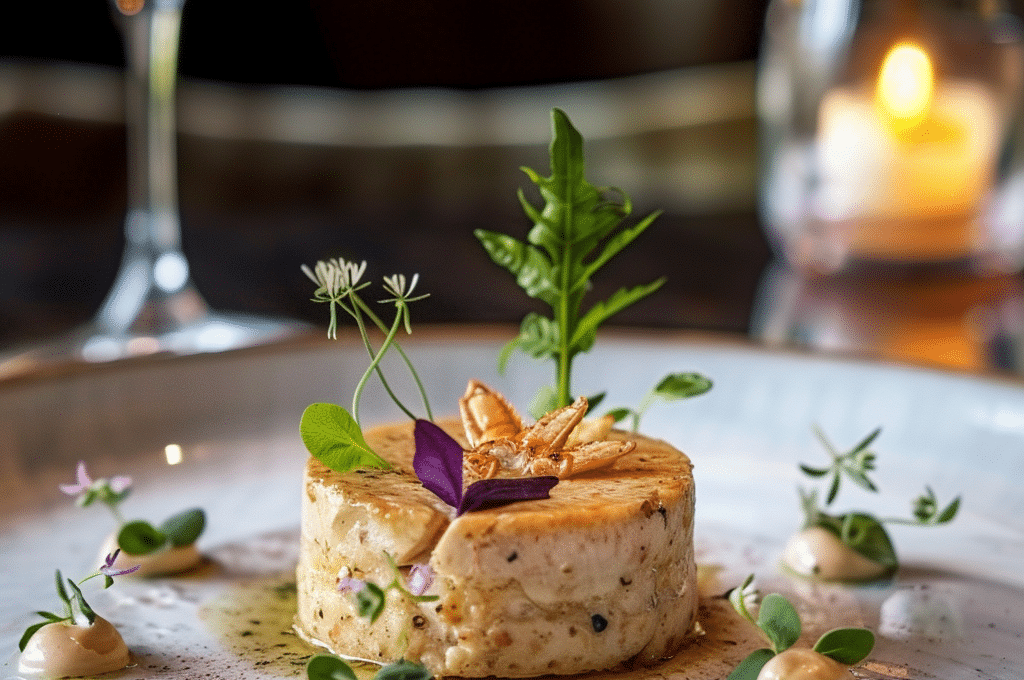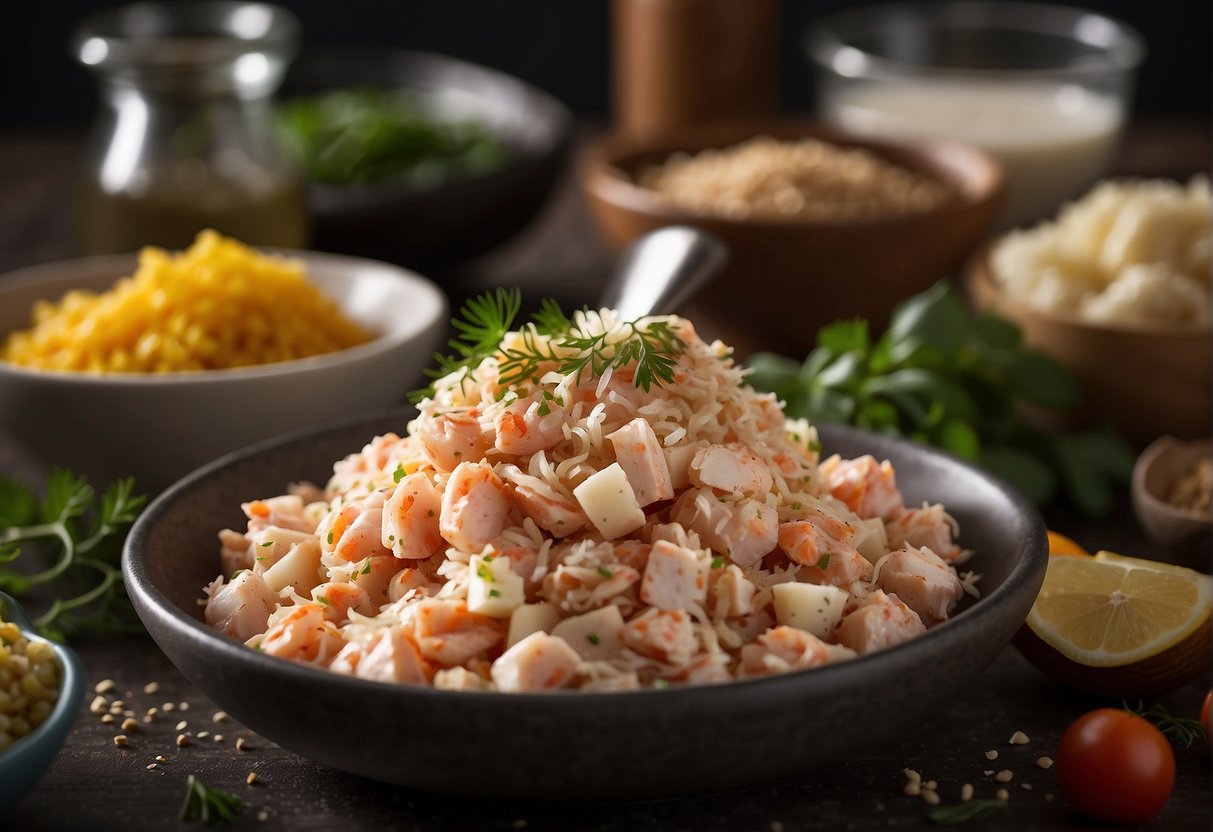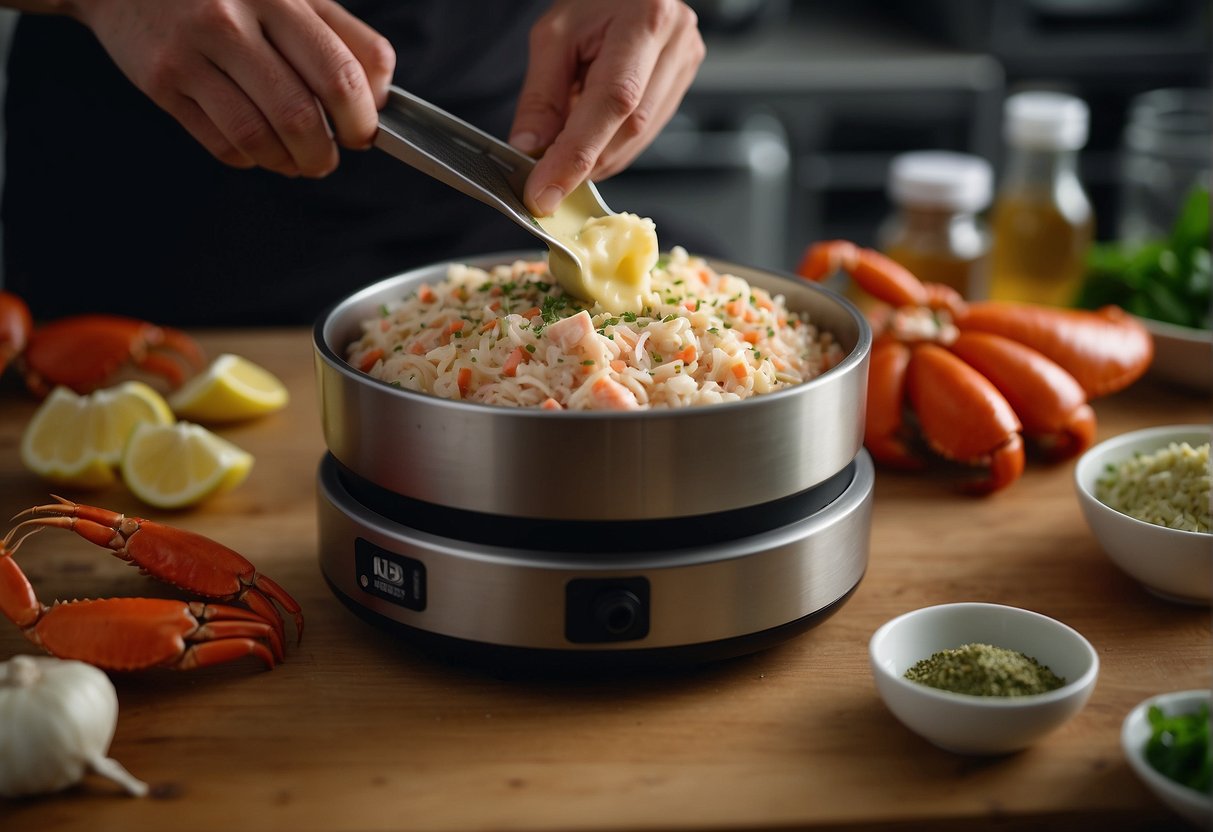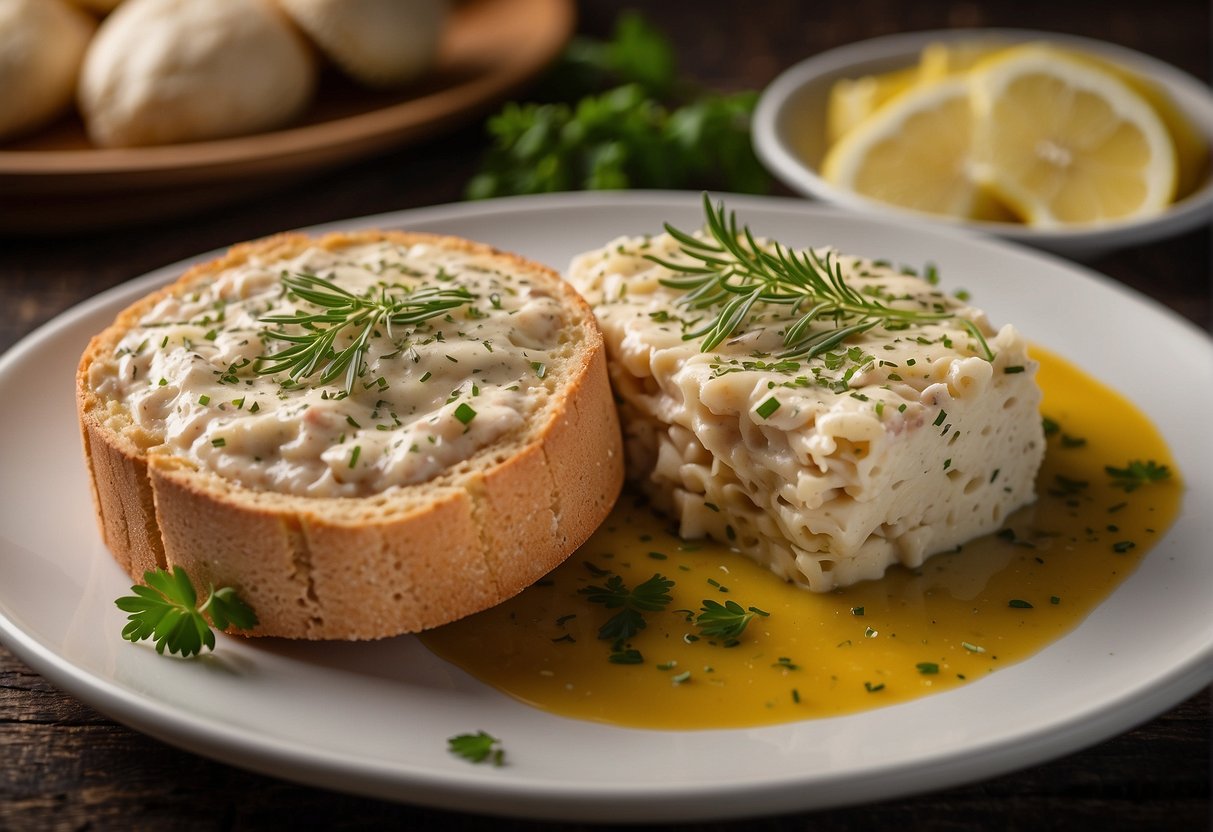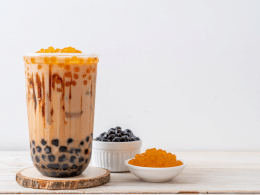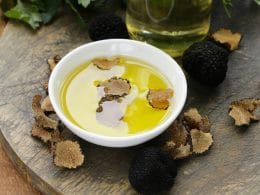Crab pâté, an elegant and flavorful spread, has become a beloved appetizer for festivities and quiet dinners alike. I appreciate its versatility, serving it on toast points, crackers, or accompanied by a fresh salad. The pâté blends succulent crab meat with complementary ingredients that enhance its natural, subtle sweetness. The simplicity of preparation, often requiring just mixing the ingredients, makes it a reliable choice for both beginner cooks and experienced chefs seeking to impress their guests.
In crafting my own crab pâté, I focus on the quality of the crab meat, opting for the freshest or most well-preserved options available. The base typically combines softened cream cheese or mayonnaise, providing a creamy backdrop that allows the delicate crab flavor to shine. To add a personalized touch, I experiment with various herbs and spices, adjusting the seasonings to create the perfect balance of flavor. The intricacies of making crab pâté lie not in complicated technique, but in the careful selection and blending of its few, quality components.
Key Takeaways
- Crab pâté is a versatile appetizer that combines crab with a creamy base and seasonings.
- The quality of crab meat is paramount, and fresh ingredients enhance the pâté’s flavor.
- Personal touches in seasoning can make a crab pâté recipe distinct and memorable.
History and Origin of Crab Pate
In my exploration of crab pâté’s roots, I’ve uncovered its ties to European culinary traditions, where pâté has long been a vehicle for creativity and thrift in the kitchen. Crab pâté, with its delicate flavor and luxurious texture, represents an inspired seafood adaptation of this storied dish.
Cultural Significance
From my understanding, crab pâté has evolved from the broad genus of pâtés and terrines, dishes with significant historical roots in French cuisine. Traditionally, pâté involves a blend of seasoned ground meat and fat, but versions using seafood, like crab, are a testament to the versatility and adaptability of this culinary form. The result is a sophisticated appetizer that reflects the finesse of French gastronomy and its openness to embrace different ingredients.
Evolution Over Time
My research reveals that over centuries, pâté evolved from a rustic, country fare into a refined gastronomical experience. Specifically, seafood versions like crab pâté may not have the medieval origins of classic meat-based pâtés, but they echo the same principles: combining ground protein with rich additives to create a smooth, spreadable delicacy. Crab pâté, enjoyed as both an appetizer and a luxurious spread, showcases this culinary evolution, placing seafood at the heart of a traditionally terrestrial dish.
Primary Ingredients and Alternatives
In crafting a delectable crab pâté, certain key ingredients are indispensable for achieving the classic flavor, while others can be substituted to cater to different dietary needs or taste preferences.
Essential Components
Crabmeat: I consider it the star of the pâté. For the best texture and flavor, I prefer using fresh lump crabmeat, but when unavailable, canned crabmeat can suffice, as suggested by Food.com’s Crab Pate recipe.
Mayonnaise: It serves as the creamy binder for the pâté. Quality mayonnaise can significantly impact the overall taste, providing a rich and smooth consistency.
Lemon: A splash of lemon juice is crucial; it imparts a fresh zestiness that brightens the dish and cuts through the richness, enhancing the crab’s delicate flavor.
Onion: A finely chopped onion can introduce a subtle sharpness and texture that complements the crabmeat nicely.
Substitute Ingredients
- Cream Cheese: For those who prefer a thicker spread or are looking to make the pâté keto-friendly, cream cheese acts as an excellent replacement for mayonnaise. It can create a richer, denser pâté, as illustrated in the Easy Crab Pâte recipe.
- Dairy-Free Alternatives: For a dairy-free version, I can swap out mayonnaise with vegan mayo or even a blended silken tofu to maintain the creaminess without the dairy.
- Spices and Seasonings: Should someone want an alternative to lemon, other citrus like lime or orange can offer a unique twist. Spreads often benefit from various spices, so feel free to experiment with adding a dash of paprika or replacing Dijon mustard as called for in the Chez Le Rêve Français recipe.
By understanding the essential ingredients and knowing how to creatively substitute them, I can craft an exemplary crab pâté that caters to diverse dietary preferences without sacrificing flavor.
Utensils and Equipment Needed
Making crab pâté is a straightforward process, but like any culinary task, having the right tools on hand is crucial for achieving the best results. I’ll guide you through the essential kitchen tools and serving ware needed to prepare and present your crab pâté with finesse.
Kitchen Tools
- Food Processor: While not mandatory, a food processor is incredibly helpful for blending the crab meat to the desired smoothness quickly and efficiently.
- Bowl: A large bowl is necessary for mixing the crab meat with other ingredients. I prefer using a glass or stainless-steel bowl for easy cleaning.
- Fork: To flake the crab meat or to mix the ingredients if you’re not using a food processor, a sturdy fork does the job well.
- Container: Have a container with a tight-fitting lid ready to store the pâté, especially if you’re making it ahead of time. This will also help in infusing the flavors during refrigeration.
- Mortar and Pestle: For those who like to add freshly ground herbs or spices, a mortar and pestle can be useful to crush these additions and release their aromatic oils.
Serving Ware
- Platter: My choice for serving crab pâté is a simple, elegant platter that complements the dish, ideally one that can keep the pâté chilled.
- Spreaders: Provide your guests with small spreaders or knives for easy application of the pâté onto crackers or toast points.
By equipping yourself with these tools and serving ware, you’ll ensure that your crab pâté is not only delicious but also presented beautifully.
Preparing the Crab Meat
In my kitchen, ensuring the crab meat is properly prepared is integral to the flavor and success of a dish. I focus on selecting the freshest crab and executing a thorough cleaning process before boiling and shelling.
Selection and Cleaning
Selection: I always opt for fresh crab with a vibrant color and a clean, ocean scent. Especially for dishes like crab pâté, where the flavor of the crab is central, choosing high-quality white crabmeat is essential.
Cleaning:
- Rinse the crab under cold, running water.
- Pry open the shell using my fingers or a tool, if necessary.
- Remove and discard the gills, which are not edible.
- Rinse the body cavity to clear any remaining innards or shell fragments.
Boiling and Shelling
Boiling:
- I bring a large pot of water to a rolling boil and add a pinch of salt for seasoning.
- Carefully, I place the whole crab into the boiling water and let it cook until it turns a bright red color, which usually takes about 8-10 minutes for average-sized crabs.
Shelling:
- After boiling, I let the crab cool down enough to handle.
- I crack the shell open and extract the white crabmeat, discarding any cartilage or shell pieces.
- I ensure that all the delicious meat is retrieved, particularly from the claws and legs, which can be accessed with a crab cracker or a small fork.
Creating the Base of the Pate
When I create the base of a crab pate, I focus on achieving a balance between flavor and texture, using ingredients that complement the delicate crab meat.
Mixing Technique
For a harmonious blend, I begin by gently combining the crab meat with finely diced ingredients like celery and red pepper for a subtle crunch. To this, I introduce condiments like Dijon mustard and a squeeze of lemon juice. The mixture should be stirred lightly to ensure the flavors meld without breaking down the crab meat’s inherent texture.
Achieving the Right Texture
The right texture of a pate is paramount: it should be firm yet spreadable. I incorporate butter or cream cheese for richness, which, when softened, integrates seamlessly. Breadcrumbs may be added to help absorb excess moisture and maintain structure. Each addition is done gradually; my aim is to stop once the mixture clings without becoming too stiff. If additional binding is needed, I mix in more cream cheese until the desired consistency is reached. It’s crucial that the base retains a lush, creamy texture which sets the stage for a delightful crab pate.
Seasoning and Flavoring
Mastering the art of seasoning is essential for creating a crab pate that is both flavorful and memorable. I focus on balancing herbs, spices, and sauces to complement the delicate taste of the crab without overpowering it. Let’s explore how the right combination can elevate the dish.
Herbs and Spices
- Parsley: Its fresh, grassy notes impart a subtle brightness to crab pate.
- Dill: With its slightly sweet and citrusy undertone, dill pairs beautifully with seafood.
- Black Pepper: A classic, the sharp bite enhances natural flavors.
- Cayenne Pepper: A pinch adds a gentle heat without dominating the crab’s sweetness.
Acidic Elements
I utilize acidic components not just for their tangy taste profile but also to cut through the richness of the pate.
- Lemon Juice: Its zesty punch is perfect for highlighting the crab’s fresh, oceanic flavor.
Mustards and Sauces
These condiments bring depth and complexity to the pate.
- Dijon Mustard: Offers a mellow spiciness and a touch of acidity that’s very harmonious with crab.
- English Mustard: It’s sharper than French mustard, so I use it sparingly.
- Worcestershire Sauce: Merely a few drops add a savory, umami depth that is quite delightful.
For my crab pate, I ensure that each of these elements are used thoughtfully to create a harmonious flavor profile, ensuring the star ingredient, the crab, always shines through.
Assembling the Pate
When constructing my crab pâte, I focus on texture and flavor, ensuring it’s perfect for spreading on a crisp baguette or delicate crackers.
Layering
In a clean bowl, I start by combining my crabmeat with carefully chosen seasonings, often including a touch of Dijon mustard and a squeeze of lemon for zing. I blend the mixture until it’s harmoniously combined but still retains some texture. Subsequently, I spoon this flavorful base into individual serving dishes, smoothing the surface with the back of a spoon.
- First Layer: Crab mixture
- Second Layer: A thin coat of flavored gelatin or a herb garnish (optional for visual appeal)
Refrigeration
To solidify the flavors and texture, I refrigerate the pâte. I cover the dishes with plastic wrap, ensuring it doesn’t touch the mixture to prevent any alteration in flavor. I then place them in the refrigerator, where I let them set for at least an hour, but preferably longer, to allow for a firmer consistency.
- Temperature:
- Ideal setting: < 5°C (41°F)
- Duration:
- Minimum: 1 hour
- Optimal: 3-4 hours for best results
This process of chilling not only helps in setting the pâte for an easy spread over toast or canapés, but it also intensifies the flavor, making every bite a delightful experience.
Serving Suggestions
When I prepare crab pâté, my focus is always on enhancing the delicate taste of the crab meat and presenting it in a way that appeals to the diner. Here are some specific suggestions for accompaniments and presentation tips that I have found to be effective in both casual and formal settings.
Accompaniments
- Snack or Lunch: For a light snack or lunch, I serve the crab pâté with a crisp salad dressed with a light vinaigrette.
- Buffet: On a buffet table, the crab pâté can be featured as a dip alongside an array of crackers, cucumber slices, and artisan breads.
- Canapés: If I’m making canapés, I like to spread the pâté on thinly sliced baguette or cucumber rounds and garnish with a sprig of dill.
- Appetizer or Starter: For a sit-down meal, the crab pâté works beautifully as an elegant appetizer or starter when served in small ramekins with toast points and a wedge of lemon.
Presentation Tips
- Aesthetics are Key: I always ensure the visual appeal of the dish by serving the pâté in attractive crockery or glassware.
- Garnishing: A garnish of fresh herbs, like parsley or chives, adds a pop of color and enhances the flavor profile without overpowering the crab.
- Texture Contrast: Providing a combination of smooth pâté with crunchy elements like toasted bread or crisp vegetables creates a pleasing texture contrast in every bite.
Nutritional Information
In this section, I’ll detail key aspects of crab pate’s nutritional profile, focusing on its caloric and macronutrient content. Understanding the nutritional composition is crucial for individuals managing their diet or requiring specific nutritional intake.
Caloric Content
Crab pate typically offers a moderately low caloric density. For instance, a serving size might contain around 90 calories. This makes crab pate a suitable option for those looking to enjoy a flavorful seafood spread without consuming too many calories at once.
Protein and Vitamin Content
Crab pate isn’t just low in calories; it’s also a good source of protein. A standard serving can contain up to 6 grams of protein, which is essential for muscle repair and growth. Moreover, crab pate contains important vitamins and nutrients beneficial for overall health, although specific vitamin content can vary depending on the recipe and added ingredients.
Food Safety and Storage
When preparing my crab pâté, I ensure the safety and longevity of the dish by adhering to two critical aspects: Proper Refrigeration and understanding its Shelf Life.
Proper Refrigeration
Immediately after preparing the pâté using my food processor, I focus on chilling the mixture. I transfer the pâté into an airtight container, which prevents contamination and moisture loss. My fridge is set below 40°F (4°C), an ideal temperature that limits bacterial growth. Here’s how I chill my crab pâté:
- Chilling Process: Place pâté in the fridge within 2 hours of preparation.
- Temperature: Ensure the fridge maintains a temperature below 40°F (4°C).
Shelf Life
The freshness of my crab pâté hinges on storage duration. Consuming it when at its best means monitoring its shelf life vigilantly:
- Consumption: Ideally within 3-5 days when kept refrigerated.
- Visual Check: Look for any discoloration or signs of spoilage before serving.
Remember that these practices are essential to enjoy my crab pâté not just for its taste but also for its safety.
Pairings and Combinations
When it comes to enjoying crab pâté, pairing it with the right accompaniments can elevate your tasting experience. I’ll guide you through selecting both beverages and foods that harmonize beautifully with the delicate flavors of crab.
Wine and Beverage Suggestions
For white wines, I find that a crisp Chardonnay or a light Sauvignon Blanc complements crab pâté quite well. These wines have citrus undertones that enhance the sweetness of the crab. If you prefer red wine, a light-bodied Pinot Noir with its subtle earthiness pairs nicely without overpowering the pâté.
- White Wines:
- Chardonnay
- Sauvignon Blanc
- Red Wine:
- Pinot Noir
Food Pairings
A classic pairing for crab pâté is toast; its crunch provides a lovely textural contrast. To take it up a notch, try a toasted brioche which adds a buttery element. As for salads, an arugula salad with a vinaigrette dressing works well, as it has a peppery bite that balances the richness of the pâté.
- Breads:
- Traditional Toast
- Brioche (toasted)
- Salads:
- Arugula with vinaigrette
Creating Variations
When I craft variations of crab pate, I consider both seafood substitutions and vegetarian alternatives that maintain the dish’s delightful texture and rich flavor.
Alternative Seafood Options
For those who enjoy a different taste or texture, substituting the crab meat in pate is simple. Two excellent options are mackerel and salmon, both of which offer a robust flavor and a richness comparable to crab.
- Mackerel: This oily fish is packed with omega-3 fatty acids and delivers a strong, savory taste. It pairs well with the same seasonings as crab, complementing the pate’s profile with a hint of boldness.
- Salmon: Famed for its buttery texture, smoked salmon creates a luxurious and subtly sweet variation of the pate that remains a crowd-pleaser.
Vegetarian Adaptations
For a vegetarian version, I find that ingredients mimicking the texture and umami essence of seafood are key.
- Chickpeas: Mashed chickpeas can serve as a wonderful base, adopting the flavors of seaweed or kelp to emulate a ‘seafood’ taste.
- Artichoke Hearts: When chopped finely, they provide a flaky texture similar to crab and can be seasoned with dulse or nori flakes to achieve a sea-inspired savor.
Consumer Considerations
When considering purchasing crab pâté, I focus on its availability, cost, and what others have said about the product.
Product Availability
Crab pâté can be either freshly made or purchased pre-packaged. I’ve noted that the pre-packaged variety is commonly found in specialty food stores and online platforms. For those preferring fresh options, they might be limited to gourmet shops or the seafood section at higher-end supermarkets. Luckily, recipes for homemade crab pâté can be easily found. For instance, the method described on Chez Le Rêve Français highlights a simple approach to making this delicacy at home.
Cost Analysis
The price of crab pâté varies significantly based on several factors, such as the quality of crab meat used and the brand. Typically, a premium product using fresh, sustainably sourced crab will command a higher price. On the other hand, the more affordable canned crab options, which are suitable for making crab pâté as suggested by World Food and Wine, can slot into most budgets without much strain.
Product Reviews
Assessing product ratings and reviews is crucial. Higher-rated crab pâté often aligns with superior taste and texture. I’ve observed that reviews can provide insight into the product’s flavor profile, ease of use, and suggestions for serving. Nonetheless, bear in mind that taste is subjective, and a five-star rating doesn’t always guarantee that the product will match personal preferences. It is important to read reviews critically and determine what aspects of the product are most important to me.
Frequently Asked Questions
Crab pâté is a beloved delicacy known for its rich flavor and versatility. In this section, I’ll answer some common questions to help you understand and appreciate the nuances of this tasty dish.
What ingredients are commonly used in making crab pâté?
The key ingredients in a classic crab pâté include crab meat, cream cheese, garlic, onions, and seasonings such as Worcestershire sauce and hot sauce. Some recipes may also incorporate herbs and spices for added flavor.
Can crab pâté be made with canned crab meat, and if so, how?
Yes, canned crab meat can be used to make crab pâté. It’s a convenient option that involves draining the liquid from the cans, then mixing the crab meat with other ingredients to create the pâté. Here’s a practical guide on preparing crab pâté with canned crab meat.
What are some recommended ways to serve crab pâté?
Crab pâté can be served as a spread on crackers or toasted bread, as a dip for vegetables, or as a filling for canapés. It’s also a great addition to a charcuterie board for an elegant appetizer.
Where can one purchase ready-made crab pâté?
Ready-made crab pâté is available at many supermarkets, specialty food stores, and online retailers. Specialty seafood markets often carry a selection of high-quality crab pâtés.
What distinguishes brown crab meat pâté from other types?
Brown crab meat pâté is made with the darker meat from the body cavity of the crab, known for its stronger flavor and richer texture. This contrasts with white crab meat pâté, which uses the lighter, more delicate meat from the crab’s claws and legs.
What health benefits are associated with consuming crab paste?
Crab paste, including crab pâté, is often high in protein and omega-3 fatty acids, which are beneficial for heart health. It also contains vitamins and minerals such as vitamin B12 and selenium.


